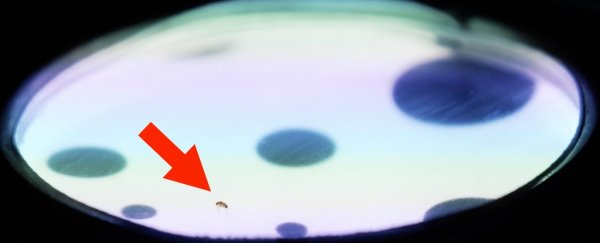It's obvious that the information coming through our eyes is a fundamental way in which we navigate the world, but what's less clear is exactly how this visual data is processed in the brain to stop us walking into walls and off the edges of cliffs.
A new study looking at the behavior of fruit flies (Drosophila melanogaster) in a 'virtual reality' setting offers up some clues – and it seems that conventional scientific wisdom on how vision and movement intertwine might be wrong.
The new experiments show that vision was used to prevent the flies from going off their intended course before it happened, rather than to get them back on track after they'd already deviated from a route – and that's a substantial difference.
"The long-standing view is that of reactive compensatory rotations, either via head-body coordination or directly on body rotations," says neuroscientist Eugenia Chiappe from the Champalimaud Centre for the Unknown research facility in Portugal.
"What we found is that that's not the case. What vision is doing to maintain gaze stability is to influence body movements by tuning postural adjustments as a preventative measure."
The researchers weren't able to strap a pair of VR goggles on the flies of course, but they did put them through a custom-made environment with static walls, a static ceiling, and a floor that could be manipulated to change what the flies saw.
The walls were heated to direct the movement of the flies, and to test intentional versus random movements.
Even when we can't see anything, we still adjust our movements and posture based on the feedback sent from various body parts – like angling our feet to stay upright on a slope, whether it's visible or not.
What the team saw in the flies was visual information overriding the rest of the body's feedback in order to achieve goals like walking in a straight line.
By treating the postural signals coming from elsewhere as less important when they could see where they were going, flies appeared to use their vision to preemptively keep their bodies on course. That suggests a very close link between sight and motor control.
 The experimental setup. (Alexandre Azinheira/Champalimaud Foundation)
The experimental setup. (Alexandre Azinheira/Champalimaud Foundation)
"The effect of vision must take place much closer to the limb control than previously thought, in the fly's equivalent of the spinal cord," says neuroscientist Tomás Cruz.
The researchers suggest their findings most likely relate to larger-brained animals also, including humans. They say it's probable that we have the same sort of bidirectional interactions happening between the spinal cord and the brain's visual circuits, making sure that information from our eyes gets priority and is used quickly.
Future research could go far beyond simply exploring how animals are able to walk in a straight line. According to the team, these links between brain and body may have relevance to our sense of self, and to the way that we perceive ourselves in relation to everything else.
The researchers are keen to investigate how vision and locomotion are affected across different types of behaviors and in different scenarios, such as patients with psychiatric conditions that impair the relationship between how we see what's around us and how that relates to our movement.
"The next steps would be to identify the exact circuits in which these sources of information converge and investigate how they interact to guide the animal's behavior," says Cruz.
The research has been published in Current Biology.
